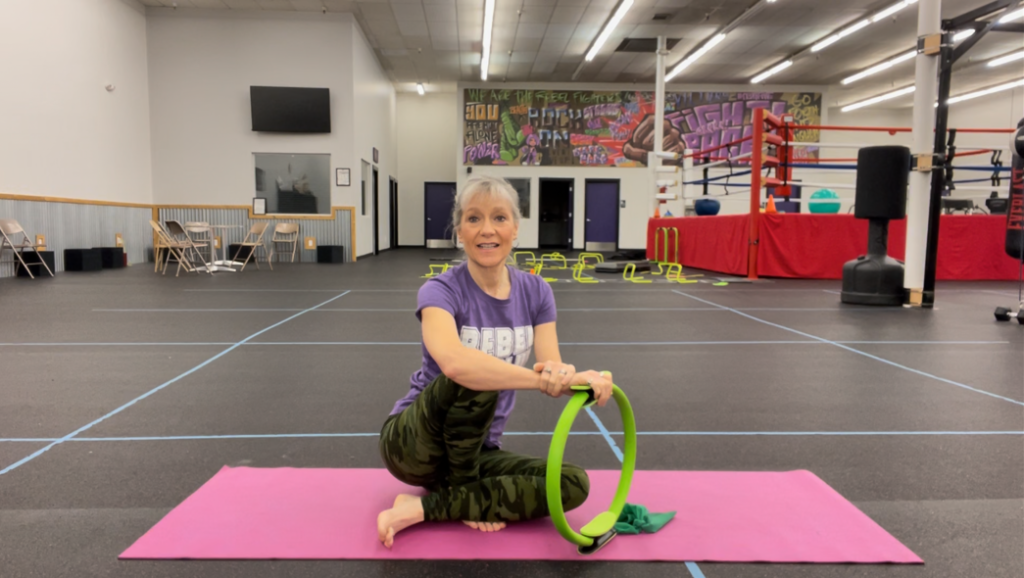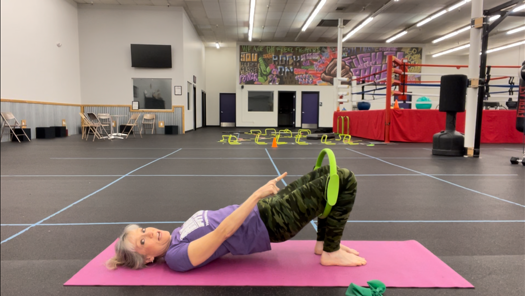
Strong glutes are vital for everyone, and especially if you have Parkinson’s. Your glutes are a very important muscle group for many reasons: they help balance your gait and stance, prevent falls, improve posture, and prevent back, hip, and knee problems. However, most of my private and group clients with back, hip, or knee pain couldn’t fire their glutes when we first started working together. This is very common!
Why Are the Glutes So Inactive?
The primary reason people suffer from underactive glutes, or “dumb bum,” is due to too much sitting. Even people who exercise every day, if they spend a couple of hours sitting, they are simply not using their glutes enough. If you don’t use it, you lose it.
Another common reason I see for inactive glutes is a neuromuscular disconnect due to Parkinson’s. This disconnection changes the mechanics and motor programming of a person’s body. This can lead to some muscle groups becoming overactive, while others become underactive. Compensation occurs and throws off everything, eventually resulting in injury.
Let’s put the two together: Parkinson’s neuromuscular disconnect + sitting too much = Parkinson’s Lazy Bum. Your glutes fall out of commission, followed by dysfunction, pain, and injury.
Glute activation means getting your muscles to contract at the right time so you can start strengthening them.
Watch this video to learn how to activate your glutes with Bridges and Hoops:
Here are step-by-step instructions to do this exercise correctly:
- Lie on your back with your arms by your side and your knees bent at about 90 degrees. Both feet should be flat on the ground, sit-bone width apart (about eight inches).
- If your head cannot lie flat, place a small pillow under it to keep your neck in a neutral position.
- Place a fitness hoop or band around your legs just above your knees.

- Inhale then, as you exhale, slowly lift into the bridge position by hinging your hips off the ground, pressing your heels into the ground and pushing your knees into the hoop.
- There should be a straight line from your ear through your hip bone to your knee.

- Place your hands on your glutes to establish that they have contracted. You should feel your glutes engaging, and your psoas muscle in front of your hips will stretch. Imagine ironing out all the creases in the front of your pants.
- Hold this bridge position (hips up) for a few seconds, then inhale to come down, leading with your tailbone to maintain a neutral position.
- Perform 10 bridges with good form and do two sets daily.
This exercise will activate and strengthen your glutes and hamstrings, and engage and stretch your hip flexors. It may be difficult to get your hips up if your glutes are weak and your hip flexors in front are tight. Be patient and keep practicing!
This is a safe exercise, but if you have back discomfort, reposition and try again, or ask your doctor if this exercise is good for your particular spine health.

Ready to take back your fight?
Contact me to get started in Kimberly Berg’s Rebel Fit Club Parkinson’s Boxing classes today. We have online workouts, too!
Subscribe now to get more tips and exercises for Parkinson’s delivered right to your inbox!